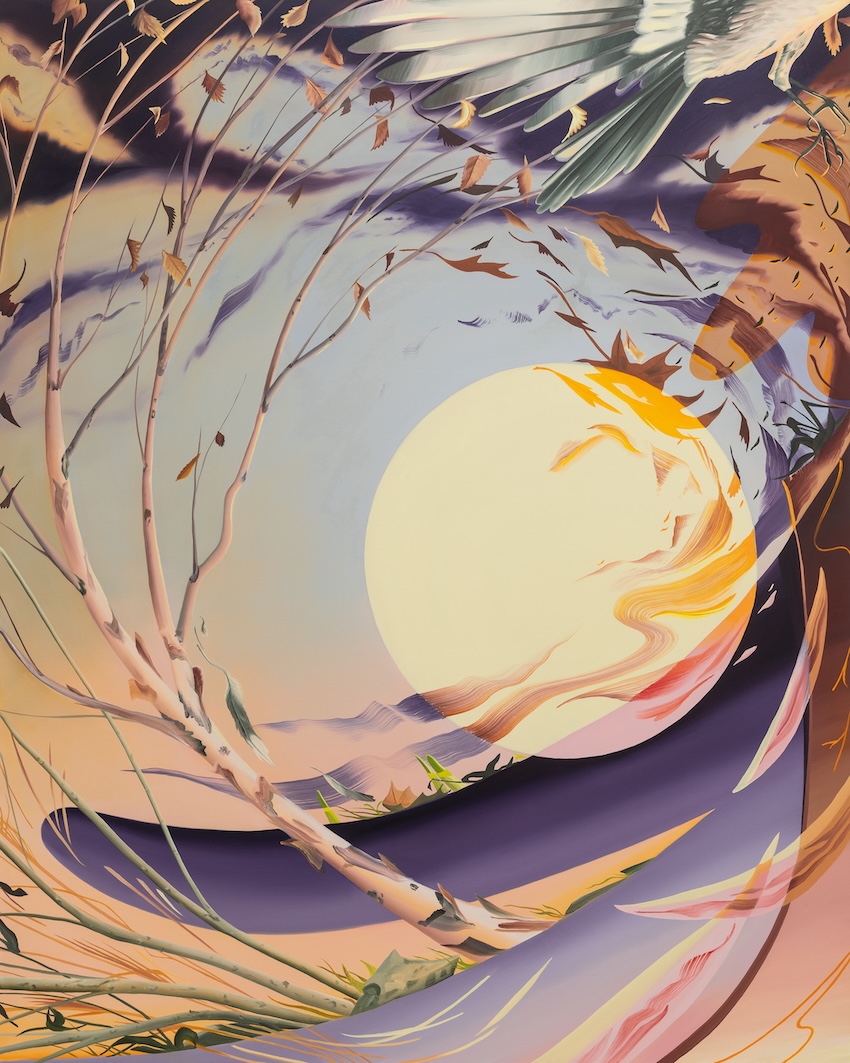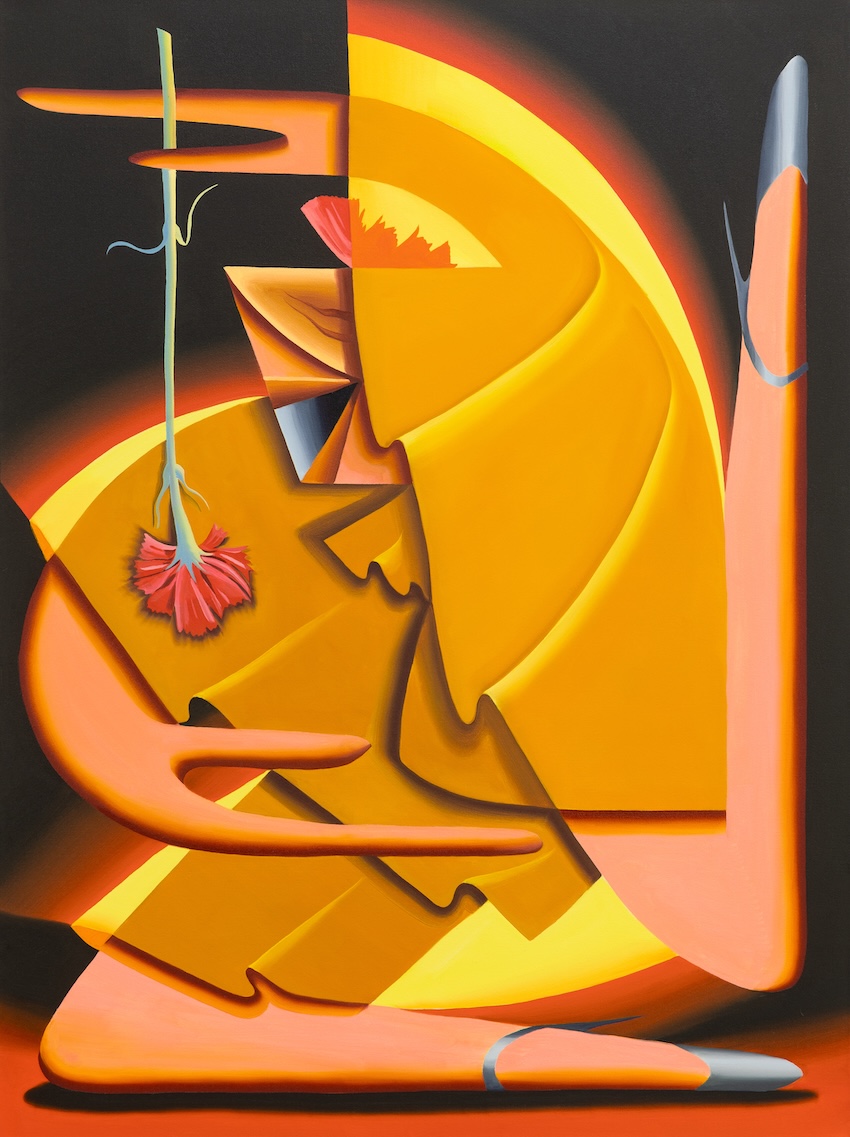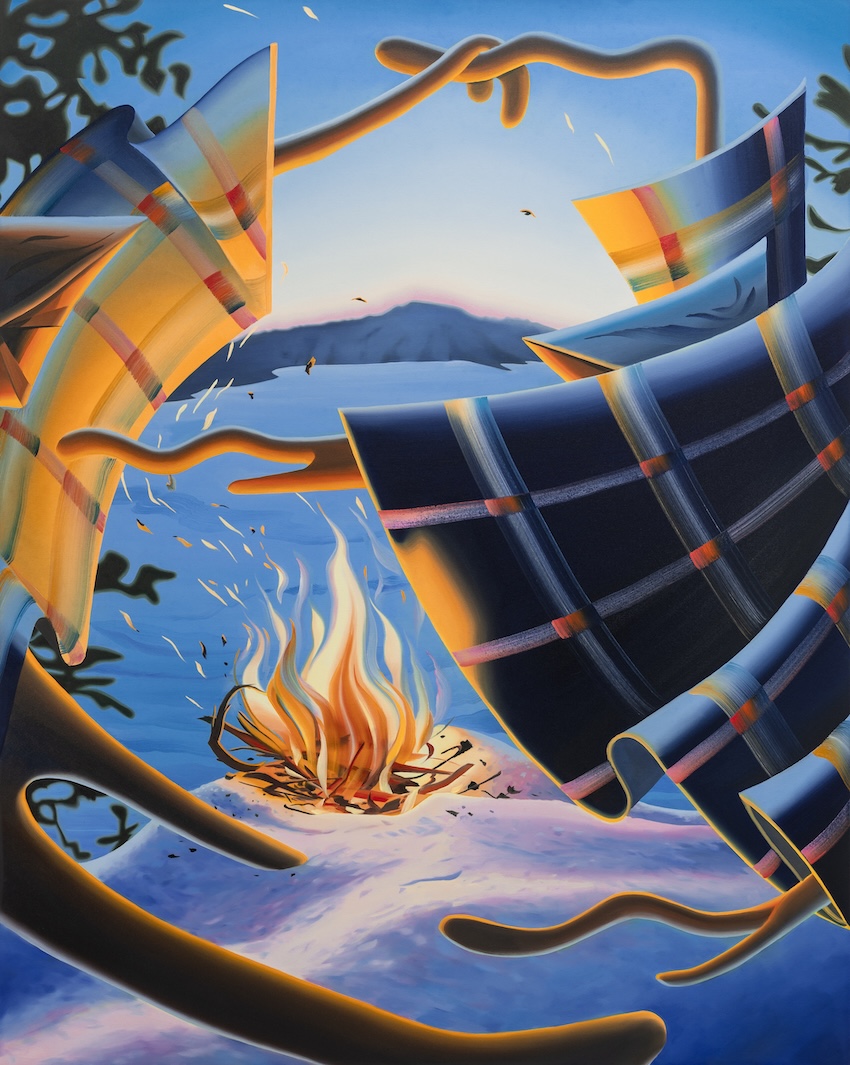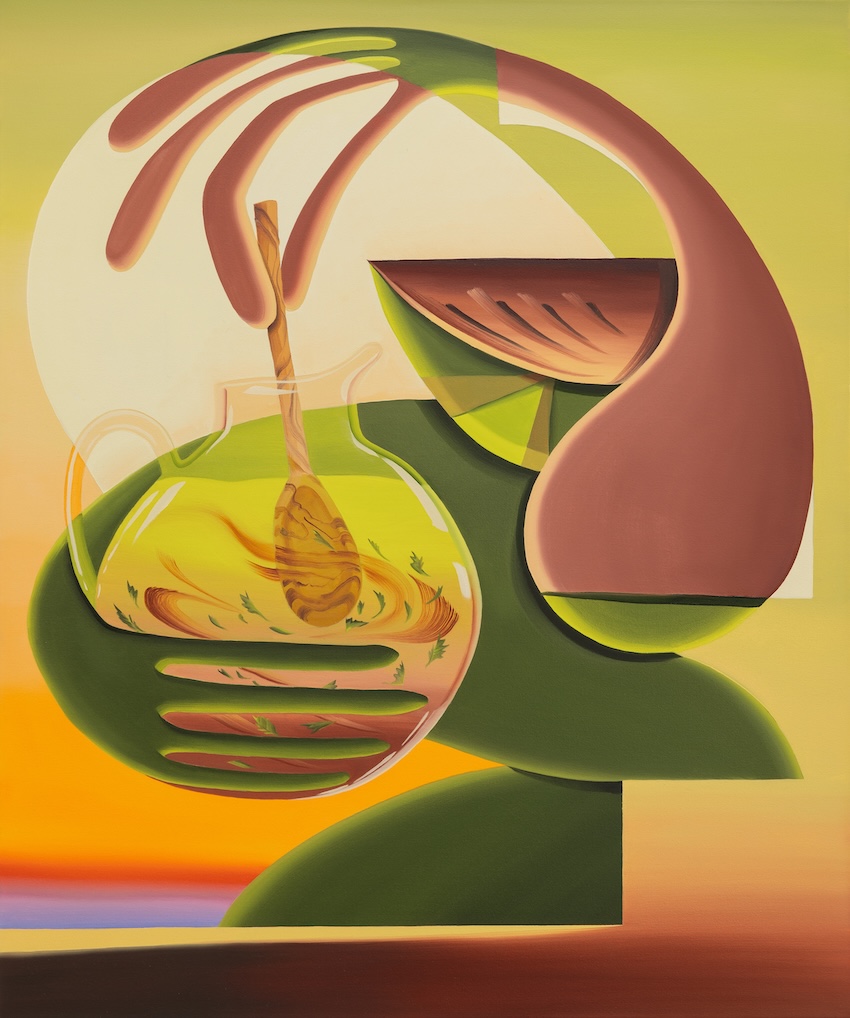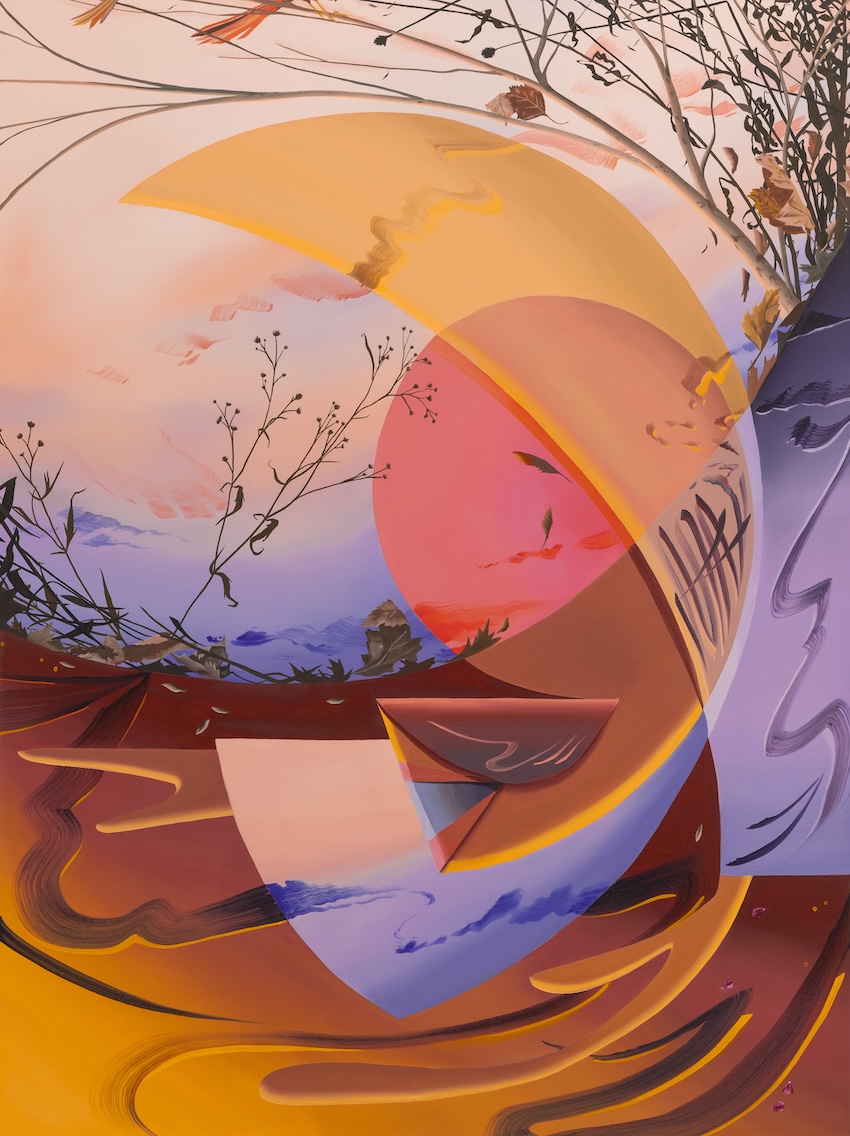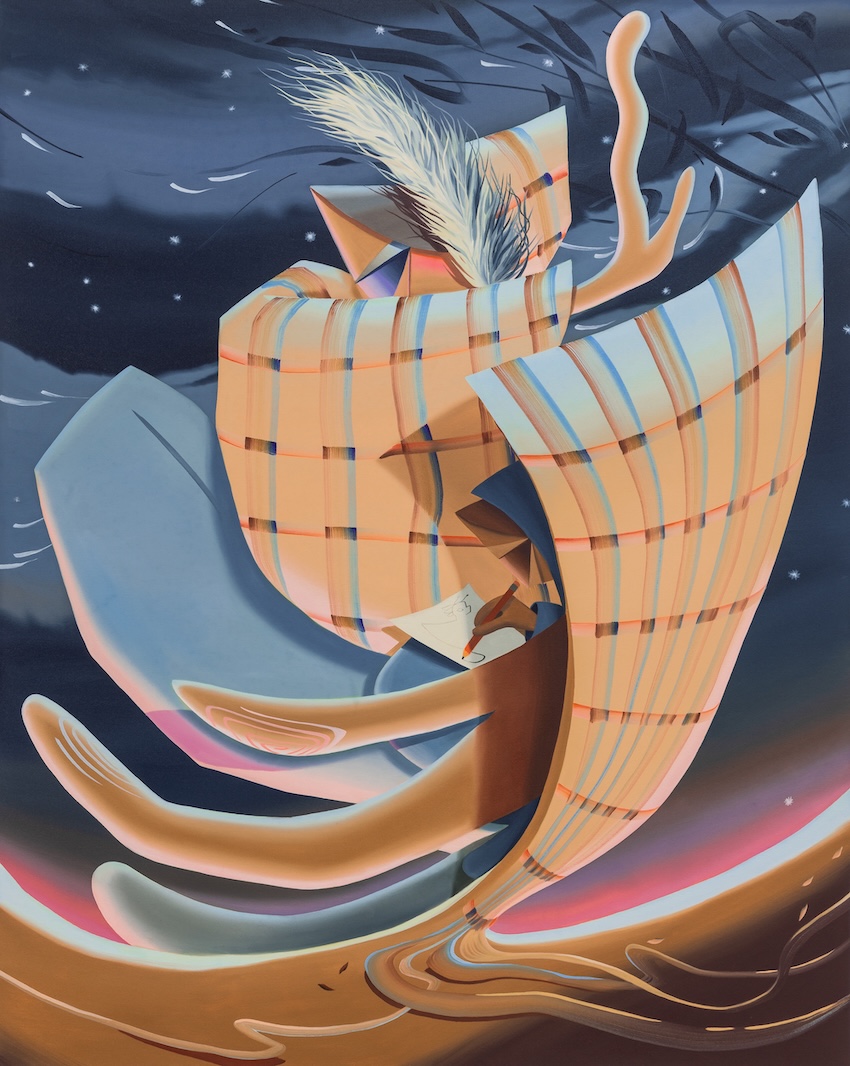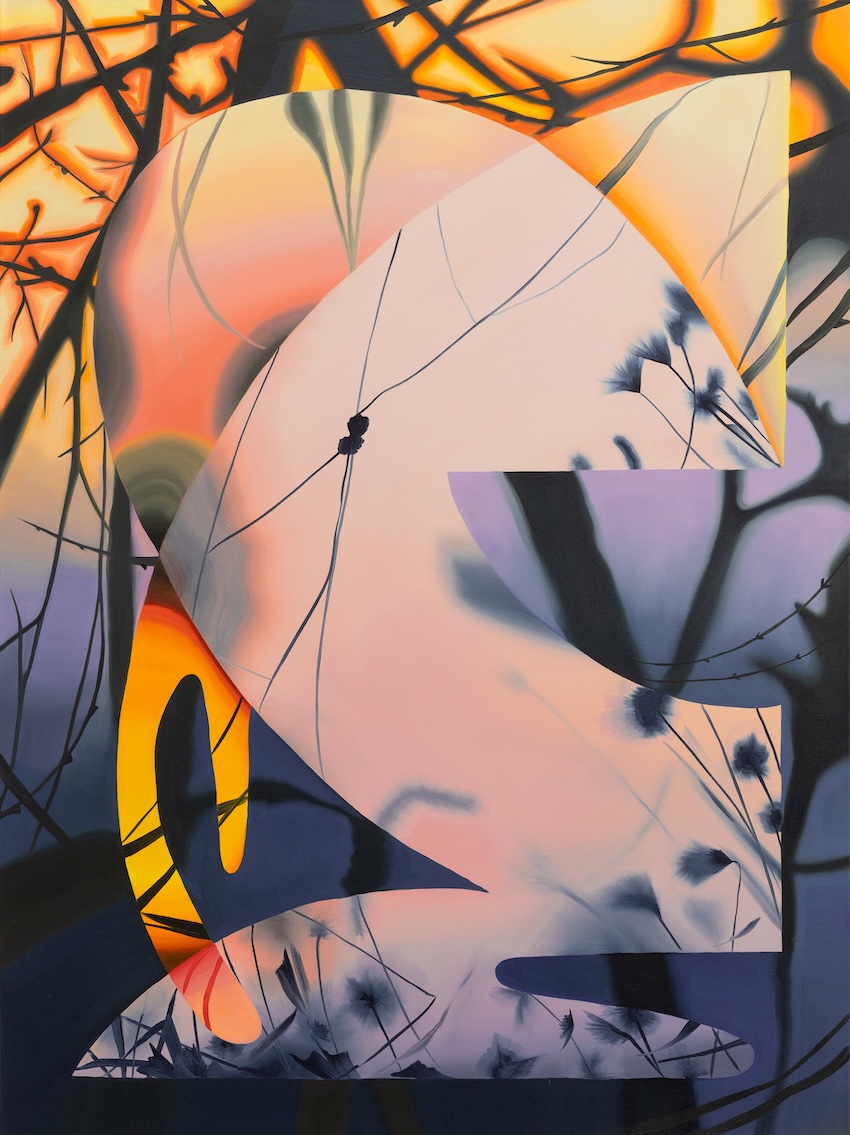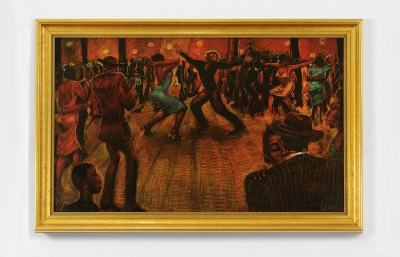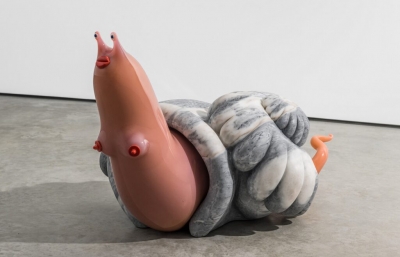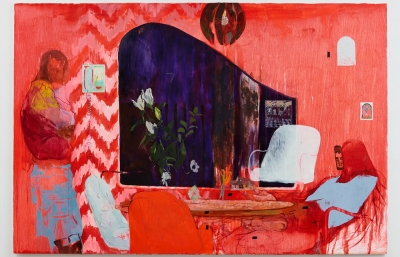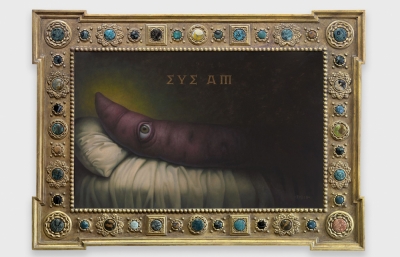Plato is excited to present Karen Seapker's first solo exhibition with the gallery, Stirring. Based on Seapker’s observation of the garden outside her studio and her reflections on the current historical moment, Stirring is dedicated to winter as a time to heal, reset and plan.
The paintings in Stirring are infused with swirls of vibrant yet soothing colors derived from nature's own wintery palette: the misty blue of a frozen lake, the pinks and violets of cool, velvety sunsets, the milky grey of a cold starry night, the comforting amber of a lantern glowing in the dark, the lime green of freshly brewed herbal tisane. Winter, both as a literal and a metaphorical season, is not a still, unproductive time. Rather, it is full of movement and quiet realignment. Dried seeds are dispersed to plant new growth, underground networks are expanded and gardening plans for spring are nurtured.
As a painterly equivalent of this constant movement, Seapker's works abound with intersecting circular and spiral shapes created with rotating gestures imbued with a centrifugal force. In nature, winter, night and even death do not mark the final end, but just another leg of a never-ending cycle of dying and being reborn. In the artist's words: "Each year, plants and seeds adapt to the conditions they moved through in the previous growing season. The shape then, of a garden’s trajectory, is more of a spiral than a circle. And moving through time in the garden can feel like a kind of stirring." This idea manifests in the evolution of the artist's visual vocabulary. In this series, she reworks and amplifies a number of tropes and troves from her earlier paintings, including the spiral motion in the composition, the color blocking and the recurring subjects: a sentinel, a protective mother, a sower and a figure on the run.
Seapker also finds inspiration in historical and contemporary agents of change and revival, who are associated with healing and confronting dark forces. Persephone Descending, for instance, references the ancient Greek goddess of agriculture who halts growth when she moves into the underworld for part of the year and brings back warmth when she returns to the earth in the spring. For Brigit is dedicated to an early Celtic goddess of fire, healing and fertility, whereas Cecilia as Lantern is a tribute to the late activist, performer and writer Cecilia Gentili. An artist, a thinker, a mother and a gardener, Karen Seapker aligns herself with a long line of real and fictional figures who gained strength in winter's mournful darkness and infused it with warmth, action and the potential for growth.





